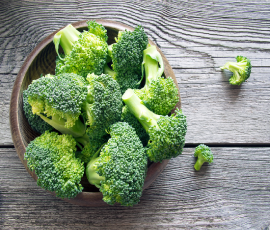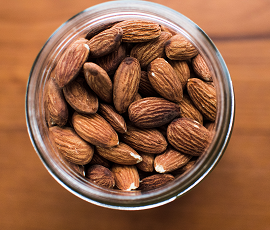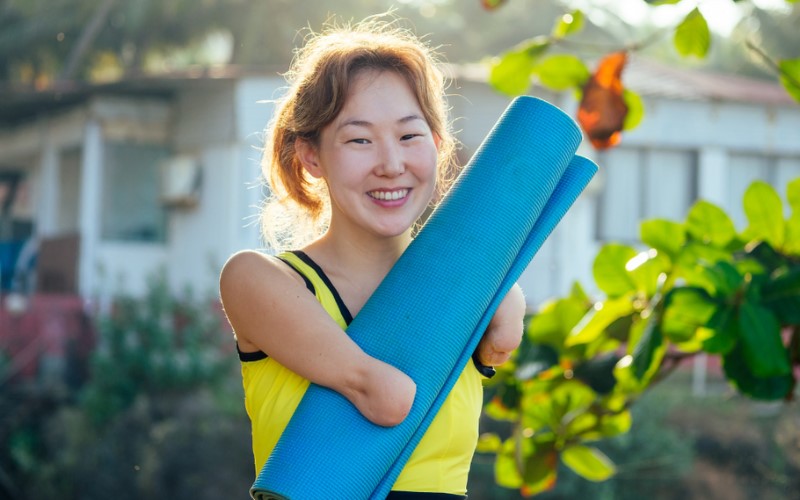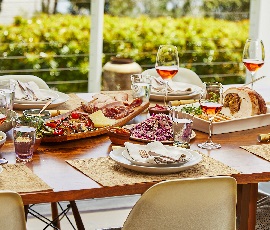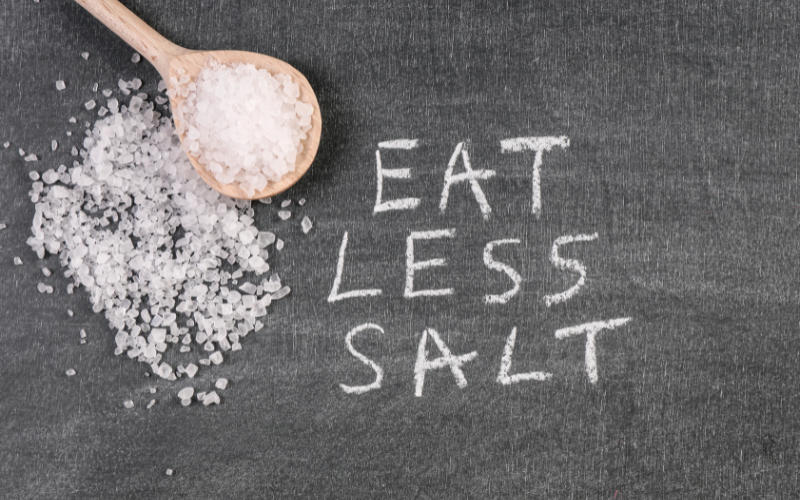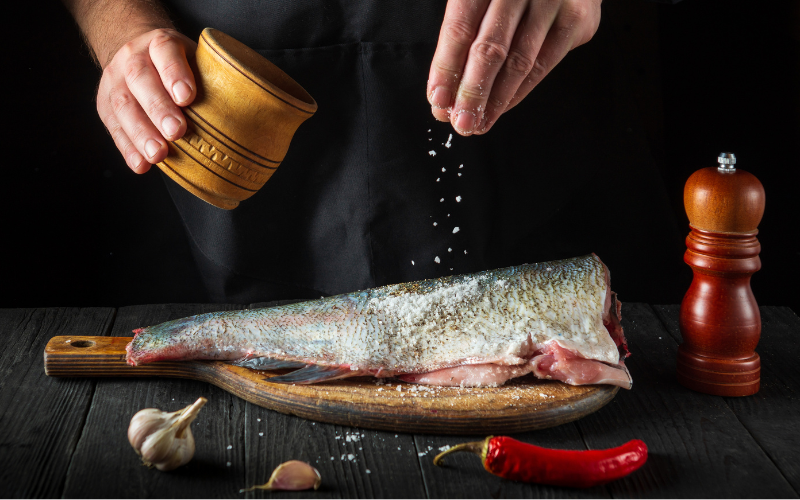Zoe Bingley-Pullin: Top Food Trends for 2020

If you’re wondering what direction food and health is going in this year, wonder no more. Here are some key trends you can expect in 2020 so you can get ahead of the curve. Want to buck the trends? Great, this article is for you too! I’ll finish off with some no-nonsense advice to help you experience great health in the year ahead, regardless of whether you buy into the fad products or not.
Plant-based
There’s no stopping the plant-based trend it would seem. It continues full steam into 2020. But exercise some caution. I’m all for upping fruit and vege intake. I’m also in favour of replacing some animal products with vegetarian alternatives. That’s because these versions of plant-based are healthy and sensible and can lead to greater wellbeing and weight loss.
However, a newer interpretation of plant-based has emerged that I find concerning. Lately our supermarkets and fast food outlets have been flooded with imitation meat products labelled as plant-based and marketed as a healthier alternative. Most of these mock meats consist of highly processed soy and vegetable proteins and other questionable ingredients that belong more in a laboratory than on our plates. For example plant-based burgers that are hitting our market, learn more about their ingredients in the blog Plant-Based Meat – Not all its beefed up to be. The key here is to keep the mindset that plant-based should mean real vegetables and plant food, not processed food with the label ‘plant’ placed on it.
Superfoods
We’ve been hearing about superfoods for decades now. In 2020 you’ll see some exciting new ones pop up so keep your eye out for these highly nutritious options:
Watermelon seeds – delicious roasted and salted or made into watermelon seed butter to spread on your ‘alternative flour’ toast.
New flours & grains – made from ingredients that may contain no gluten, or no grains (a la paleo style) and typically higher in fibre, protein and other nutrients. For your next home-baked muffin or pancake, why not try green banana flour, cauliflower flour or tiger nut flour? Some African cereal grains are also rising in popularity and availability such as teff, millet, sorghum and fonio. Try my Wild Rice, Millet & Almond Pilaf recipe from my Falling in Love with Food Cookbook.
Berries – new on offer this year are Cape gooseberries (golden berries), Indian gooseberries (amla berries) and Maqui berries. What all these berries have in common is an impressively high amount of antioxidants and phytonutrients.
Tiger Nuts – like a cross between a coconut and an almond, these tubers are jam-packed with fibre, especially resistant starch. Enjoy them raw, soaked, dried, as a plant milk, added to smoothies, as a spread, or ground into flour.
Hemp Seeds & Oil – more protein and more omega-3 than either flax or chia, hemp may start calling to you in 2020. So versatile, these seeds can be added to smoothies, soups, baked items or stir-fry’s. Both the seeds and the oil are perfectly legal in Australia (as they don’t contain any prohibited ingredients) and they are highly nutritious. The delicate green oil is perfect for dressings, mayonnaise or drizzling on top of veges but don’t cook with it as it has a low smoke point.
Sweet stuff – helping us to move further away from processed refined sugars are a number of newer, more natural sweeteners. Look for pomegranate molasses, monk fruit, sweet potato nectar and date syrup.
Coloured Vegetables – how about some new and not-seen before super veg? Greens lovers will rejoice with new choices such as rapini (broccoli rabe), camote tops (sweet potato leaves), celtuce, and komatsuna (Japanese mustard spinach). Also predicted to gain popularity are blue or purple coloured veges with high antioxidants – such as corn, broccoli, basil, potatoes, butterfly pea and spirulina.
Sustainable
This carbon emission conscious trend is starting to encompass the full end-to-end food chain from farming, through to government, retailers and consumers. Over recent years, we have said goodbye to plastic straws and single-use plastic bags and hello to keep cups and plant-based plastics that go beyond recycling. Enter biodegradable and compostable packaging options that create zero carbon footprint and can be thrown into your home compost bin to return naturally to the earth. Dietlicious is preparing to make the switch to more eco-friendly containers in 2020, so keep your eye out for some exciting news on this front soon!
Gut-Health
Most of us now appreciate the importance of our gut in terms of our overall wellbeing. So it’s little wonder that food makers are getting in on this health trend with the addition of prebiotic fibre (such as inulin) as well as the probiotic bacteria too.
Fermented foods which are naturally rich in probiotics are also going mainstream. You’ll start to see them popping up in sauces and other processed foods. Just remember that to get the health benefit of the fermented foods, you need to eat ones that contain live bacteria and that means they’re kept in the refrigerated section and they haven’t been pasteurised (which destroys the bacteria).
Convenience
As a generation, there’s one thing we’re lacking in common – time. And that’s why convenience options have become the norm and a necessity, rather than a luxury. In 2020 we’ll see more healthy on-the-go options than ever before, especially in places like service stations, supermarkets and vending machines. I’m talking about things like fresh fruit, nuts, wholesome sandwiches and even boiled eggs.
Convenience foods certainly cut down on your labour but there is a cost attached to time-saving and it’s not just money. Most pre-cut produce has not just been washed, peeled and trimmed but has also been treated with certain gases to extend shelf life and prevent browning (for example, vegetable sticks and cut fruit). The longer time spent in storage, transit and on the shelf can mean a significant deterioration in nutrient content. Plus there is also the environmental cost of extra, unnecessary packaging and food miles to consider.
I always encourage people to set aside time once a week to do food prep and planning. It keeps you healthy, is better for the environment and creates less waste. But even the best of us need to fall back on some wholesome options when we don’t have time to cook ourselves and I’m no exception – that’s why I have a stack of Dietlicious meals and snacks in my freezer to pull out when I need a quick healthy meal.
Functional
Functional foods are similar in appearance to conventional ones but have been developed to serve a particular physiological role. This could mean the addition of certain nutrients or ingredients that target health conditions. In 2020, expect to see products that are labelled and marketed as being good for anxiety, for diabetes, for stress, for blood pressure, or for gut health as mentioned earlier.
Personalised nutrition is also a growing trend and while we’re not quite at the point where your local supermarket will have tailored products just for you, foods will begin to target groups of people. Think about skincare, where products cater to dry skin, oily skin or combination. Foods may follow a similar path.
You don’t need food fads to be healthy – my 6 top tips for cutting through the trends
- The best foods are always the most natural ones that you recognise. Make sure that the majority of your diet comprises wholefoods. The Mediterranean Diet for example, has been shown to support good health and longevity and consists of mainly fruit, vegetables, wholegrains, legumes, fish, nuts and seeds, plus some meat, eggs, dairy, olive oil and wine.
- Any nutrient-dense food is a superfood. You don’t have to go for any weird and wacky unrecognisable superfoods. Common fruits and vegetables suffice – so load up guilt-free on broccoli, blueberries, sweet potato, spinach, capsicum, chickpeas, almonds, seafoods and grass-fed meats to name a few.
- Diversify. Getting a wide range of natural foods into your belly each week is so important. Experts now believe that diversity may be more important than even probiotics or prebiotics for gut-health. Recent research suggests you should aim for 30+ different foods per week. Just don’t have the same menu day in, day out.
- Most people’s health can benefit from more plants and less processed foods. Most highly processed foods offer zero nutritional benefit. They are fine as an occasional treat if you enjoy them, but they certainly won’t make you feel good, look good, lose weight or get healthy. Only natural, wholefoods can do that.
- Meal plan. At risk of sounding like a broken record, please do try to take a few minutes each week to plan ahead for your meals, cooking and shopping. This is the best way to keep on track with healthy eating. Here’s an earlier article I wrote that can help you meal plan quickly and effectively.
- Always check the label and ingredients, especially on packaged products that are promoted as healthy! Don’t be fooled by the manufacturer’s tricks, hidden sugars, high salt or disguised preservatives or additives. Here’s an article that can help you understand food labels better.
I trust you'll find this straight-forward nutrition and lifestyle advice helpful in providng you a more holistic approach to improving your health and wellbeing.

